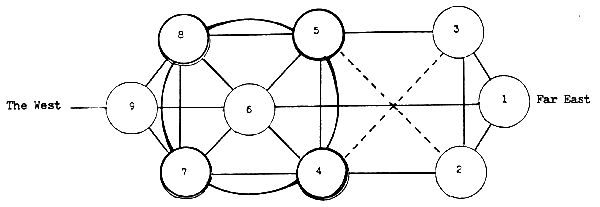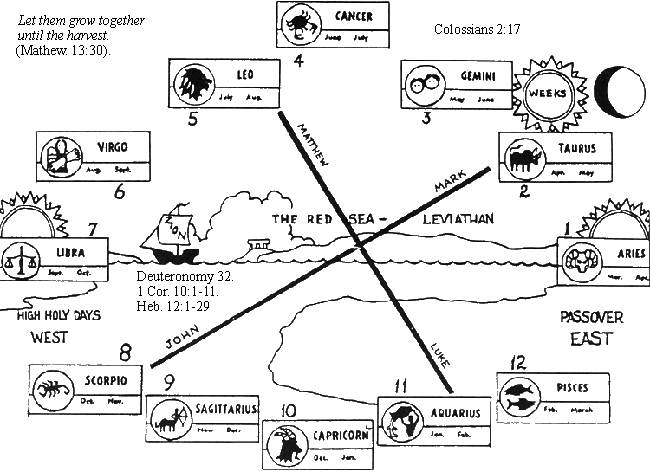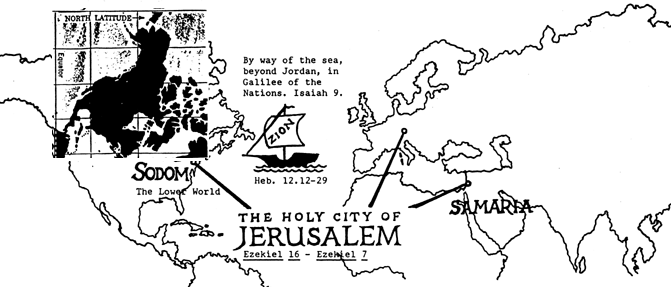
THE SOCIETY OF THE BEE, NATURE'S MOST PERFECT CREATION
THE LIFE OF THE BEE
By Maurice Maeterlinck
(With an Introduction by Edwin Way Teale)
"No living creature, not even man, has achieved in the Center of his sphere, what the Bee has achieved."
Maurice Maeterlinck
"In this detailed, fascinating study of the habits and life of the Honey Bee, Maurice Maeterlinck has written a glorious and perceptive tribute to the Infinite Order of the Universe--and to Nature's enigmatic ways as they are manifested in the hive. Filled with the colors, the scents and sounds of the changing seasons, this rare and lovely book offers exciting insight into the everyday miracle of the Bee--AND THE LESSON IT HOLDS FOR THE HUMAN RACE...

The inhabitants of the villages ceased, they ceased in Israel, until that I Deborah (the Beehive) arose, that I arose a Mother in Israel...
So let all thine enemies perish, O Lord. but let then that love God be as the Sun when he goeth forth in his might...(Judges 5:7; 31).

Malachi, chapter 4 (KJV).
Here is the absorbing drama of the Going Forth of the swarm, THE FOUNDATION OF THE NEW SEALED CITY, THE BIRTH, COMBAT AND SOARING NUPTIAL FLIGHT OF THE YOUNG QUEEN BEE, THE STRANGE MASSACRE OF THE MALES and the storing of the vast reservoirs of HONEY within the waxen walls...
In those days came John the Baptist, preaching in the wilderness of Judaea,
And saying, Repent ye: for the kingdom of heaven is at hand.
For this is he that was spoken of in the prophet Esaias, saying, The voice of one crying in the wilderness, Prepare ye the Way of the Lord, make his paths straight.
And the same John had his raiment of camel's hair (the mysteries of Islam), and a leathern girdle about his loins; and his meat was locusts (the Scythian/Babylonian mysteries) AND WILD HONEY...(Matthew 3:1-4).
...The intriguing saga of the diplomacy that rules this bustling community, THE MYSTERIOUS SACRIFICIAL URGE THAT LEADS EACH BEE TO PLACE HIMSELF IN MORTAL PERIL TO SAVE THE GROUP, a breathtaking description of the intricate feats of architecture which the tiny builders of the hive perform each year anew--all of which makes fine reading in this enchanting masterpiece about the most orderly community in the universe."
INTRODUCTION
During the years in which the nineteenth century drew to its close, Maurice Maeterlinck, the Belgian dramatist and Nobel Prize winner, spent summer in a square country house set among beech trees and surrounded by the grain fields and orchards of a Norman plateau. Here, one day, he laid down a wild-bee book by J. Henri Fabre and exclaimed: "What marvels could be written about all that!" A few days later, Maeterlinck began work on his classic "La Vie Des Abeilles, The Life of the Bee." ...
It was written, quite literally, among the bees it celebrates. Georgette Leblanc tells us how the author worked through the summer, sitting at a table spread with a green cloth on which were set little dishes of honey to attract the humming insects through an open window from the hollyhocks, phlox and larkspurs outside. Individual bees were marked for identification with small dabs of bright colored paint...At this time Maeterlinck was in his late thirties. He was already widely known for his symbolic plays...and for his volume of mystical and philosophical essays...
In 1887 Maeterlinck settled in Paris and became identified with a group of symbolist poets...In 1911, Maeterlinck was awarded the Nobel Prize for Literature and on his seventieth birthday, in 1932, he was given the rank of Count by the King of Belgium. With the Nazi invasion of France, in 1940, Maeterlinck, then seventy-eight, fled with his wife to America, returning to Europe at the close of the war. He died in Nice, France, on May 6, 1949. His villa there he had named Les Abeilles.
This then was the man whose study of the hive and its mysteries had so permanently enriched the literature of natural history. The book, itself, begins in a beguilingly simple and matter-of-fact fashion. And throughout all its poetry and philosophical speculation there runs a strong thread of fact and observation. However, The Life of the Bee was never intended to serve as a practical guide to agriculture. Nor is it an encyclopedic treatise on the habits of bees. Nor are all of its statements completely in accord with modern knowledge. It is book in which, in an inevitable way, science and philosophy and fancy intermingle. Moralists long have seen in bees models of industry and foresight; poets have long extolled their civic virtues. If Maeterlinck moralizes it is philosophically. HE IS ABSORBED BY THE MYSTERIES OF LIFE, THE LIFE OF THE BEE AND THE LIFE OF MAN. IN THE MICROCOSM OF THE HIVE HE OBSERVES THE LAW AND ORDER THAT RUN THROUGH THE UNIVERSE.
The bee, in many parts of the world, was linked with the lives of ancient people. Babylonians built their temples on ground consecrated with honey and, in Peru, the Incas offered honey as a sacrifice to he Sun. The Rig-Veda, sacred book of the East set down in Sanskrit between 2000 and 3000 B.C., gives the honeybee a prominent place, as do almost all the great books of religion.
The bee, according to Mohammedan teaching, was the only creature directly spoken to by the Lord. In Egypt ancient carvings along the Nile frequently depict the bee and during the days of Greece and Rome honey formed the chief sugar supply of the world. Mead, a honey-made beverage that antedated beer, was the prized drink of the Middle Ages. It was mead that, in the sagas of Norse mythology, Odin and Thor and the heroes slain in battle, quaffed in Valhalla.
The close linkage of man and bee through the ages is reflected in innumerable superstitions that surround the hive and the activity of its occupants...PEASANT GIRLS IN CENTRAL EUROPE USED TO LEAD THEIR LOVERS PAST BEEHIVES, BELIEVING AN OLD SUPERSTITION, THAT IF A MAN WHO HAD BEEN UNFAITHFUL SHOULD PASS BY THE INSECTS WOULD RUSH OUT AND STING HIM...
IF A SWARM LANDED ON A HOUSE, A BELIEF OF THE BRITISH ISLES HAD IT, GOOD LUCK WOULD COME TO THE OWNER OF THE HOUSE. IF, HOWEVER, THE SWARM DESCENDED ON A ROTTEN BRANCH MISFORTUNE WAS FORETOLD...
For thou hast said in thine heart, I will ascend into heaven, I will exalt my throne above the Stars of God: I will sit upon the mount of the Congregation, in the sides of the North.
I will ascend above the heights of the Clouds; I WILL BE LIKE THE MOST HIGH.
Yet thou shalt be brought down to hell, to the sides of the pit.
They that see thee shall narrowly look upon thee, and consider thee, saying, IS THIS THE MAN THAT MADE THE EARTH TO TREMBLE, THAT DID SHAKE KINGDOMS:
THAT MADE THE WORLD AS A WILDERNESS, AND DESTROYED THE CITIES THEREOF: THAT OPENED NOT THE HOUSE OF HIS PRISONERS?
All the kings of the nations, even all of them, lie in glory, every one in his own house.
But thou art cast out of thy grave LIKE AN ABOMINABLE BRANCH, and as the raiment of those that are slain, thrust through with a sword, that go down to the stones of the pit; as a carcase trodden under feet.
Thou shalt not be joined with them in burial BECAUSE THOU HAST DESTROYED THY LAND, AND SLAIN THY PEOPLE: THE SEED OF EVILDOERS SHALL NEVER BE RENOWNED.
PREPARE SLAUGHTER FOR HIS CHILDREN FOR THE INIQUITY OF THEIR FATHERS; THAT THEY DO NOT RISE, NOR POSSESS THE LAND, NOR FILL THE FACE OF THE WORLD WITH CITIES...(Isaiah 14:13-21; John 15:1-7).
AND IF THE BEES CAME DOWN IN A DEAD TREE THE SUPERSTITIOUS SAW A PORTENT OF DEATH IN THE OWNER'S FAMILY. At various times honeybees have been thought to be skilled in astronomy, to have uncanny ability in predicting rain...Probably the superstition that persisted longest, finding an echo on many pages of ancient literature, WAS THE BELIEF THAT SWARMS OF BEES WERE ENGENDERED WITHIN THE DECAYING CARCASSES OF OXEN...

Behold now Behemoth, which I made with thee: he eateth grass as an Ox...Job 40:15.
Out of the darkness of superstition into the light of science the facts of bee-life have slowly progressed. Many men have been part of its evolution...."Man truly became the master of bees, although furtively, without their knowledge; directing all things without giving an order, receiving obedience but not recognition." The bee, through all ages of its association with man, has never become domesticated in the sense that a dog or cow is domesticated. It still lives its wild free life. It admits of guidance ONLY WITHIN THE FRAMEWORK OF ITS INHERITED PATTERN OF INSTINCTS. The veiled enigmas of those instincts absorbed Maeterlinck; they also absorb the modern scientists. For in the everyday life of the hive, so easily observed, science has found a fertile field for probing the mysteries of animal behavior.
How, Von Frisch wondered, are bees able to inform their fellows of the location of a new supply of food?...Each began a curious round dance, circling to the left, then to the right, repeating this over and over for half a minute at a time. In great excitement other workers crowded around it. They trooped after it, stretching out their antennae to catch the flower scent adhering to its body. Then one by one, they left the hive. Soon these bees,,,appeared at the spot where the food was found. THE LANGUAGE OF THE DANCE had sent them out in search of flowers of a certain perfume nearby.
This was the procedure when food was not far off. When it was more remote, a different kind of dance occurred. This time the returning bee ran in a straight line, wagging its abdomen rapidly from side to side, before it circled to the left. Another tail-wagging run in the same place and in the same direction, then a circle to the right and the run repeated, then a circle to the left. This went on and on while excitement mounted in the surrounding bees. The line of the tail-wagging run, Von Frisch found, indicated to the other bees the direction of the food. If he rotated the comb during such a dance, he observed the direction of the run was continually changed like the shifting needle of a compass that is turned in the hand...
But even more was told by the dancing bees. THE SUN IS THE GREAT SIGNPOST ON THE AERIAL HIGHWAY OF THESE INSECTS. AND THE DANCE OF THE RETURNED WORKER INDICATED THE RELATIONSHIP OF THE SUN TO THE ROUTE THAT WAS TO BE TAKEN...
Peering into the veiled life of the bee, Maeterlinck sought to fathom its enigmas with a poet's insight. Von Frisch, with his probing spotlight of research, has since illuminated obscure aspects of hive-life. BUT STILL--BEYOND THE POET'S INSIGHT AND THE SCIENTIST'S VISION--LIES AN ULTIMATE MYSTERY, THE BEGINNING AND EVOLUTION OF THE INSTINCTS WHOSE MANIFESTATIONS ARE SO MEMORABLY SET FORTH IN 'THE LIFE OF THE BEE.'"